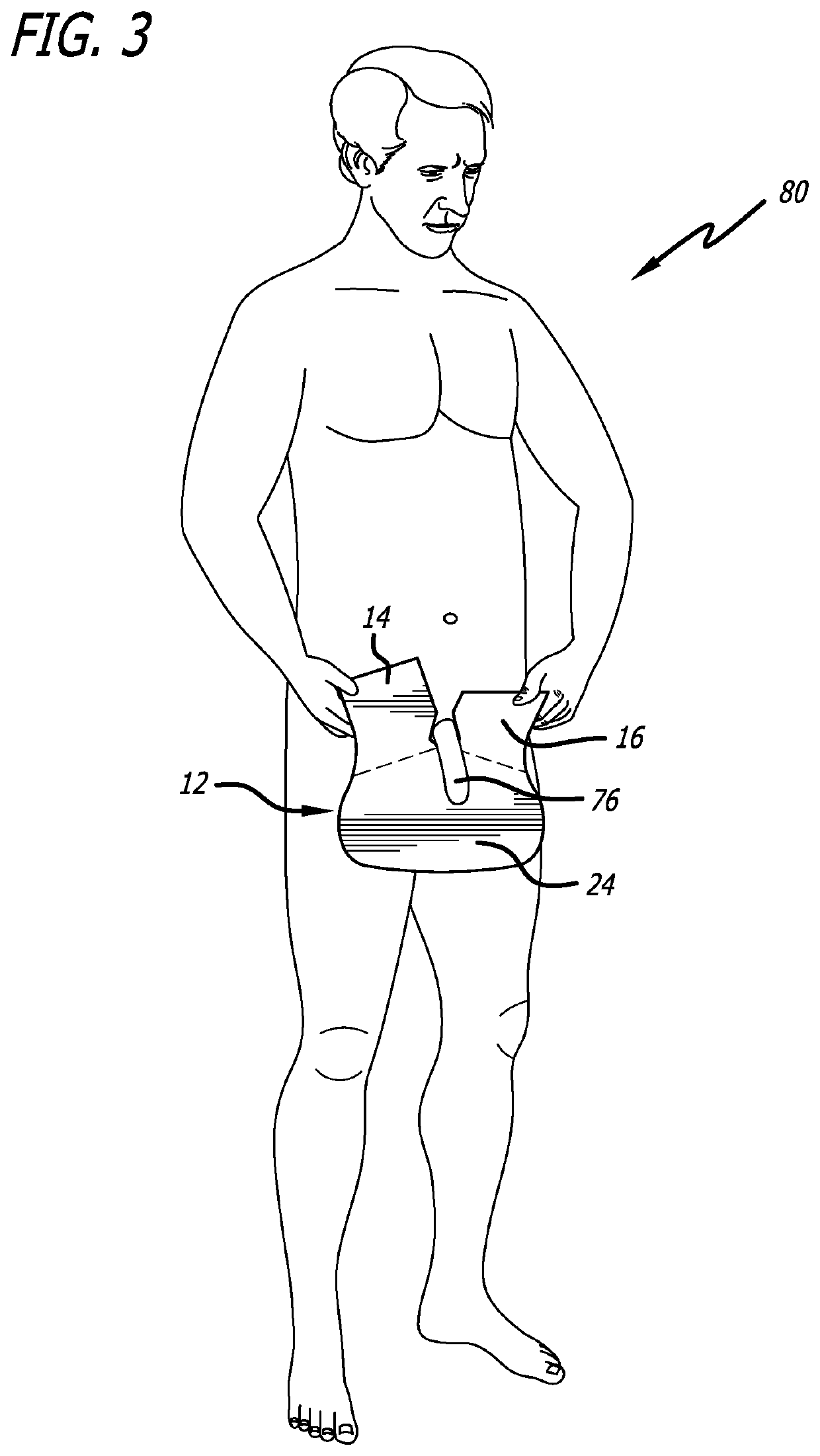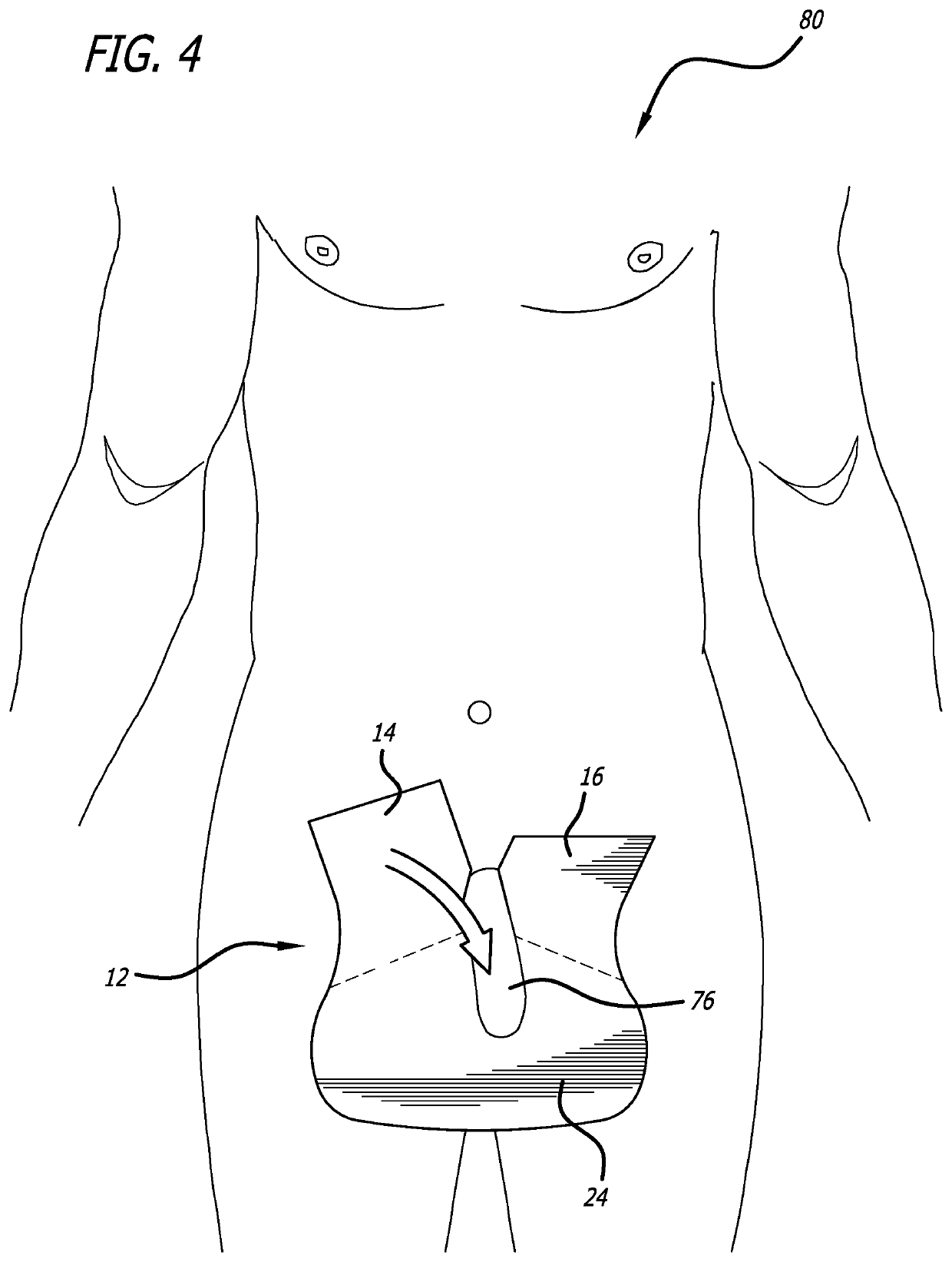Urine absorbent pad
a technology of absorbent pads and urine, applied in the field of adult incontinence, can solve the problems of reducing the effect of urine absorption, reducing the number of urine absorption pads, so as to eliminate gaps
- Summary
- Abstract
- Description
- Claims
- Application Information
AI Technical Summary
Benefits of technology
Problems solved by technology
Method used
Image
Examples
Embodiment Construction
[0029]FIG. 1 illustrates a plan view of a first preferred embodiment of the present invention, comprising a pad 12 generally formed by a base 24 and first and second wings 14, 16. The pad 12 is formed by enclosing fluid absorbent material between an fluid impervious outer lining 18 and a soft fluid transmissive inner lining 20. The outer lining 18 may be made of a polyethylene film or other low cost, biocompatible material to seal in the urine and prevent leakage outside of the trap. The inner lining 20 that bear's against the user's skin may be made of polypropylene or suitable non-abrasive, non-toxic material that transmits fluid while largely staying relatively fluid free at the surface. The absorbent center 22 may contain wood pulp and super-absorbent polymers such as sodium polyacrylate. Sodium polyacrylate is effective in wicking away fluid from the skin through the inner lining 20, and can soak up to 30 times its weight in urine. The absorbent center is bordered around its ed...
PUM
 Login to View More
Login to View More Abstract
Description
Claims
Application Information
 Login to View More
Login to View More - R&D
- Intellectual Property
- Life Sciences
- Materials
- Tech Scout
- Unparalleled Data Quality
- Higher Quality Content
- 60% Fewer Hallucinations
Browse by: Latest US Patents, China's latest patents, Technical Efficacy Thesaurus, Application Domain, Technology Topic, Popular Technical Reports.
© 2025 PatSnap. All rights reserved.Legal|Privacy policy|Modern Slavery Act Transparency Statement|Sitemap|About US| Contact US: help@patsnap.com



